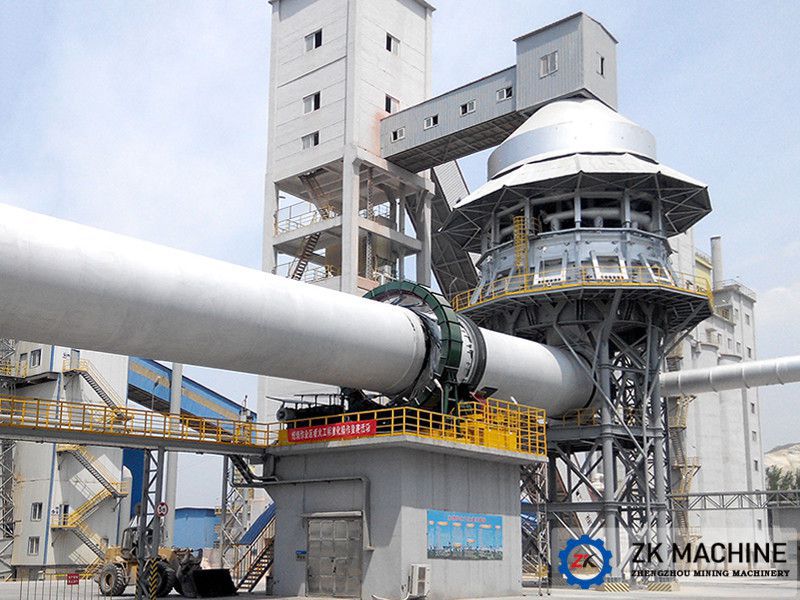Brief Introduction of Rotary Kiln
Date:2020-09-30 Source:zk corp Views:
Rotary kilns are widely used in building materials, chemical, environmental protection industries, such as cement, lime, ceramsite, white fluorite, medical waste incineration, etc.
The rotary kiln is installed obliquely, the high end is the kiln tail, and the low end is the kiln head. The material enters from the kiln end and exits from the kiln head; the rotary kiln is generally counter-current, with fuel entering from the kiln head and flue gas exiting from the kiln end.

Rotary kiln barrel rotation generally requires speed regulation, using variable frequency motor or DC motor.
The sealing form of rotary kiln generally adopts scale seal and compound seal.
The kiln head cover is located at the end of the kiln head, and is provided with fire viewing holes, burner holes, inspection doors, temperature measurement and pressure measurement holes, etc. on it.
The burner hole is not in the center of the rotary kiln, but is set in the direction close to the material according to the direction of rotation of the kiln. For example, when the rotary kiln rotates clockwise, the material is concentrated on the lower left, and the burner hole is also opened in the center near the lower left square.
Rotary kiln shell generally adopts Q235B or Q255A material.
Because of the irregular shape of the kiln head and the end of the kiln, refractory bricks cannot be built. Generally, burning injection is used. A retaining ring is used between the refractory brick and the burning injection to prevent the refractory bricks from falling off at the contact point.
The kiln head guard plate is installed at the kiln head. The main consideration is that the material is in a high temperature state when discharged to avoid contact with the cylinder. On the other hand, it is considered that the guard plate is worn by frequent discharge. Generally, wear-resistant High temperature resistant material.
The supporting wheel/retaining wheel device is set at least with 2 gears, and there are 3 or more gears. The supporting wheel device is usually set near the end of the kiln. Our supporting wheels use mechanical wheels below Ø3.2m, and hydraulic wheels above Ø3.2m.
Because the kiln temperature is relatively high when the rotary kiln is overhauled or shut down, stopping the kiln directly will cause the cylinder to sag and deform under the action of gravity. It is necessary to use auxiliary transmission to slowly rotate and cool down to support it to prevent deformation.
Diesel engines are generally used for auxiliary transmission to prevent unexpected situations such as power outages from causing unavailability.
The rotary kiln moves up and down when it is rotating, and the up and down cycle should be controlled at about 8 hours.

